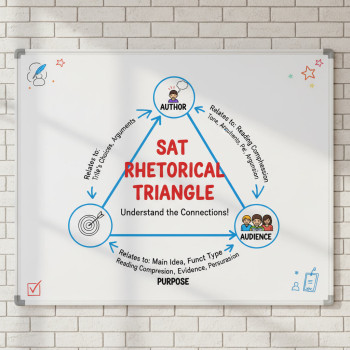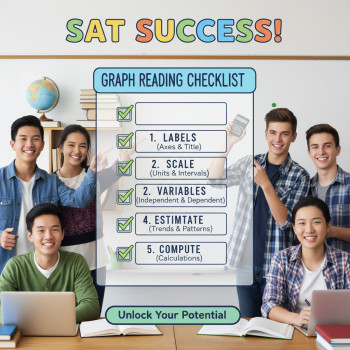AP vs SAT: A Honest Conversation for Parents and Students
The college admission landscape has changed a lot in recent years. Test optional is no longer a headline-only policy for a few universities it s a reality many families live with as they plan high school course loads, test prep calendars, and summer priorities. If you re a parent trying to help your teen decide where to spend their time and energy, the question keeps coming up: in a test optional world, should we emphasize AP courses and exams or the Digital SAT? The short answer is: both can matter but for very different reasons. The longer answer is what this article is for.

Why This Question Matters Now
Colleges use many tools to evaluate applicants: grades, course rigor, essays, recommendations, extracurriculars, and where required or useful standardized tests. Over the past few admission cycles, many institutions moved to test optional policies for SAT scores; some still recommend or require tests for certain scholarships, honors programs, or international placements. Meanwhile, AP courses remain a visible signal of academic challenge and preparedness, and AP exam scores can translate into real college credit or placement.
So when a family asks, Should we stop worrying about SATs? the pragmatic reply is that it depends on the student s goals, strengths, and the colleges they re targeting. Let s break down the differences, uses, and practical tradeoffs so you can make a purpose driven plan.
What AP Exams Do for Your Student
Academic preparation and transcript signal
AP courses sit on a student s transcript and communicate two things to admissions officers: willingness to take challenging coursework, and mastery of college level material in a subject area. A transcript full of thoughtfully chosen AP classes not just the maximum number possible often reads as intellectual curiosity plus strong work ethic.
College credit and placement
AP exam scores (typically 3, 4, or 5) can sometimes convert into college credit or allow students to skip introductory courses. That can save tuition, reduce course load, or let students pursue advanced electives earlier which is especially valuable for students planning double majors, pre med tracks, or internships.
Depth and specialization
APs let students demonstrate depth in areas they care about. A student pursuing engineering can showcase Calculus BC and Physics C; an aspiring historian can take multiple history and language APs. That subject alignment can strengthen letters of recommendation, college essays, and major preparation.
What the Digital SAT Does for Your Student
Comparative, standardized measure
The SAT offers a standardized snapshot of readiness in evidence based reading, writing, and math. Even in test optional contexts, a strong SAT score can corroborate a student s academic record especially for students from schools with less well known grade inflation dynamics, or when applying out of state. Some scholarship programs and merit awards still rely on test scores, and selective majors or programs occasionally ask for scores even if overall policy is optional.
Versatility and stress management
Because the SAT is a single achievement that colleges can use to compare applicants from different schools, it can be particularly helpful when a student s GPA is lower than their potential due to a rough semester, family disruption, or school transitions. A single strong SAT performance can reassure an admissions committee that the student has strong academic skills.
AP or SAT: How Colleges Actually Use Them
Admissions offices do not have a single rule that fits every case. Here are typical patterns many counselors and families see:
- Test Optional Admissions: Students aren t penalized for not submitting SAT scores. If you have a score that materially strengthens the application, submit it; if not, focus on other elements.
- AP Exams: Colleges often list credit and placement policies for AP scores some give credit for a 4 or 5, others accept a 3 for certain courses. AP transcript strength matters for admissions even independent of exam scores.
- Scholarships and Honors Programs: These sometimes require or recommend test scores. If your target schools offer competitive merit aid, preserving the option to submit a strong SAT score is wise.
- Major Specific Review: STEM programs, economics, and similar majors may weigh math readiness and subject performance more heavily strong AP math/science and/or SAT math can both help.
Practical Framework: How Parents Should Prioritize
Rather than an either/or approach, use a three step framework to prioritize: Research, Reflect, and Plan.
1) Research Know Your Targets
Start with the colleges and programs your student is most likely to consider. Find their admission policies and AP credit charts (these are often published on college websites). Note scholarship requirements and whether particular departments recommend or require testing.
2) Reflect Honest Assessment of the Student
Ask these questions together:
- Does your transcript reflect challenge? If not, can you add APs that make sense for the student without overwhelming them?
- How does your student perform on timed, standardized tasks? Are they anxious, or do they rise to the occasion?
- Does the student need AP credit to save money or accelerate a major? Or is the goal mainly to show rigor on the transcript?
3) Plan Allocate Time Intentionally
Design a simple prioritization plan for the next 12 18 months. Examples:
- High Achiever with Top Tier Ambitions: Take several relevant APs, prepare for the SAT to try for a strong score to submit, and target subject alignment between APs and intended major.
- Student with Strong Grades But Test Anxiety: Load APs conservatively (depth over quantity), skip submitting SAT unless practice tests show competitive performance, and use AP exams and grades to frame the application narrative.
- Student Needing Scholarships: Invest in SAT prep alongside at least a couple of APs; a strong SAT can unlock merit aid while APs can show rigor on the transcript.
Time and Energy: What s a Reasonable Split?
Your family s schedule matters. Both AP classes and SAT prep demand time. A rough allocation that works for many students:
- During the school year: Prioritize doing well in AP classes (homework, projects, and class engagement) aim for 60 75% of college prep effort here.
- Outside school hours and summer: Dedicate focused blocks to SAT practice and targeted weak area work 25 40% of prep time in focused spurts depending on test date proximity.
Remember: quality beats quantity. A student who aces two APs in relevant fields and submits a solid essay will often make a stronger impression than one who crams for six APs but underperforms across the board.
How to Use AP Scores Strategically
AP scores are both a record and currency. Use them strategically:
- Send scores selectively if you can. Some colleges receive full score histories, so consult each college s policy before sharing every exam.
- If you re pursuing credit, check the specific score thresholds colleges require for credit in the subject (many require a 4 or 5 for core courses; some accept a 3 for elective credit).
- Use AP scores to place out of introductory coursework, freeing room for double majors or study abroad.
How to Use SAT Scores Strategically
If your student is submitting scores:
- Choose the test date that allows solid practice time and doesn t coincide with major school deadlines (like finals or AP exams).
- Consider diagnostic tests then use targeted practice on the specific question types that drag scores down.
- Remember that some schools superscore, while others consider the highest single test. Know each school s policy when deciding how many test attempts to take.
A Simple Comparison Table: APs vs SAT (At a Glance)
| Characteristic | AP Exams / Courses | Digital SAT |
|---|---|---|
| Main Benefit | Demonstrates subject mastery and can earn college credit or placement | Provides a standardized comparison across applicants and can unlock scholarships |
| Where it shows up | Transcript and exam score report | Submitted score report (optional at many schools) |
| Timeframe | Year long course plus May exam | Single test sessions across the year (digital format) |
| Best for | Students who want depth, credit, or to show subject strength | Students who need a standardized corroboration of academic ability or want merit aid |
| Risk | Taking too many APs can harm GPA if workload is overwhelming | Poor test day performance can be omitted under test optional policies |
Common Scenarios and Recommended Moves
1) The Strong Student Aiming for Selective Colleges
Take 4 6 APs over junior and senior year with strategic alignment to intended majors. Prepare for the SAT to produce a competitive score to submit if it strengthens the application. Think of APs as long term proof of rigor and the SAT as a stamp of comparability.
2) The Overloaded Student with High Stress
Trim APs to the subjects the student truly enjoys and can excel in. Skip the SAT if practice scores are uncompetitive; instead, focus on essays, recommendations, and extracurricular depth. If scholarships are a concern, consider targeted SAT prep with a clear timeline for one strong test attempt.
3) The Student Seeking Cost Savings or Course Acceleration
Prioritize AP exams likely to grant credit in target colleges (calculus, chemistry, languages, or other core subjects). Confirm credit policies early and plan AP enrollment accordingly this can directly reduce time to degree and tuition expenses.
4) The Student from a Less Known School
Strong AP course selection helps, but a robust SAT score can be especially useful to provide an external benchmark. Consider investing in focused SAT practice to create that external signal.
How Tutoring Fits In: The Role of Personalized Support
Not every family needs outside help, but many find strategic tutoring makes the difference between stress and confidence. Personalized tutoring offers several advantages:
- 1 on 1 guidance that zeroes in on the student s weaknesses and learning style.
- Tailored study plans so AP coursework and SAT prep don t compete but complement each other.
- Expert tutors who can help with time management, essay revision, and test strategy.
- Data driven feedback (including AI driven insights in some programs) that tracks progress and highlights where practice yields the biggest score gains.
For families considering professional help, Sparkl s personalized tutoring has features that often fit naturally into a balanced college prep plan: expert tutors for both AP and SAT work, individualized study plans that respect school schedules, and AI driven insights that keep practice efficient and focused. When used judiciously, tutoring can reduce wasted time and reduce anxiety around dense workloads.
A Real World Example: Two Students, Two Paths
Consider Maya and Jordan.
- Maya loves biology and plans to study neuroscience. She takes AP Biology and AP Psychology, nails both classes, and earns a 4 on both exams. She also studies for the SAT, but chooses not to submit a score because practice tests are middling. Her transcript, essays, research experience, and AP depth make her a strong candidate for programs that value subject mastery.
- Jordan attends a small public school without many AP offerings. His GPA is excellent, but admissions officers outside the region don t know the school. Jordan focuses on the Digital SAT and raises his score significantly after targeted prep. He submits the score to show comparability and supplements his application with a clear list of advanced coursework and teacher recommendations. The SAT functions as an equalizer.
Both strategies work they re just tailored to different student realities.
Checklist for Parents: A 6 Point Action Plan
- Map out target colleges and their AP credit and test policies.
- Audit the student s transcript for academic challenge add APs thoughtfully where they make sense.
- Do two practice SATs under timed conditions to inform whether test prep is likely to produce a competitive score.
- Create a balanced schedule that protects mental health: avoid stacking finals, SAT, and multiple AP projects in the same week.
- Consider tutoring if the family needs structure, targeted skill work, or scholarship oriented test prep. Sparkl s tutoring approach is helpful for building custom plans that align AP workload and SAT practice.
- Stay flexible: revisit the plan after junior year grades and practice test results, and make decisions about score submission based on evidence, not pressure.
Common Myths Quick Reality Checks
- Myth: “If a school is test optional, the SAT doesn t matter at all.” Reality: A strong score can still strengthen an application or qualify a student for scholarships.
- Myth: “APs always equal college credit.” Reality: Credit policies vary. Always check individual colleges AP credit charts.
- Myth: “More APs always look better.” Reality: Admissions officers value rigor and success in courses chosen strategically over the sheer number of APs with weak grades.
How to Keep Stress in Check for Students and Families
College prep shouldn t consume the high school experience. Keep these habits front and center:
- Build a manageable calendar early, blocking study time, relaxation, and family time.
- Encourage sleep, balanced meals, and exercise cognitive performance depends on basic health.
- Remind your student that colleges look for character as much as test scores resilience, curiosity, and consistent effort carry weight.

Final Thoughts: A Balanced, Evidence Based Approach
In the test optional era, parents should avoid binary thinking. AP courses and exams, and the Digital SAT, serve different but complementary purposes. APs demonstrate subject mastery and can deliver college credit. The SAT provides an external, standardized measure that can be especially valuable for scholarships, comparisons across schools, and certain competitive programs.
The best strategy is personalized: know the colleges you re aiming for, assess your student s strengths and stress points honestly, and build a plan that preserves well being while maximizing opportunity. If targeted support would help, selective use of tutoring for example, one on one guidance or a tailored study plan that aligns AP work with SAT prep often delivers the most efficient gains. Programs like Sparkl that combine expert tutors and data driven insights can help families compress friction and keep the plan on track.
Above all, prioritize depth over quantity, decisions over panic, and progress over perfection. College admission is a marathon not a single test and thoughtful planning now will set your student up for success both on applications and in college itself.
Resources to Keep Handy (For Planning)
Make a small binder or digital folder that includes:
- College AP credit policies and test optional guidance.
- AP course syllabi and exam schedules from the school counselor.
- SAT practice test results and a short diagnostic history to measure progress.
- Key deadlines for score submission, scholarships, and AP score free send dates.
One Last Note to Parents
It s tempting to treat college prep like a checklist to complete. Instead, treat it as a conversation with your student: what subjects light them up, where do they learn best, and how can your family support sustainable momentum? When choices are made thoughtfully balancing AP depth with strategic SAT preparation students arrive at college ready to thrive academically and emotionally. That, more than any test score, is what parents should ultimately prioritize.



















No Comments
Leave a comment Cancel